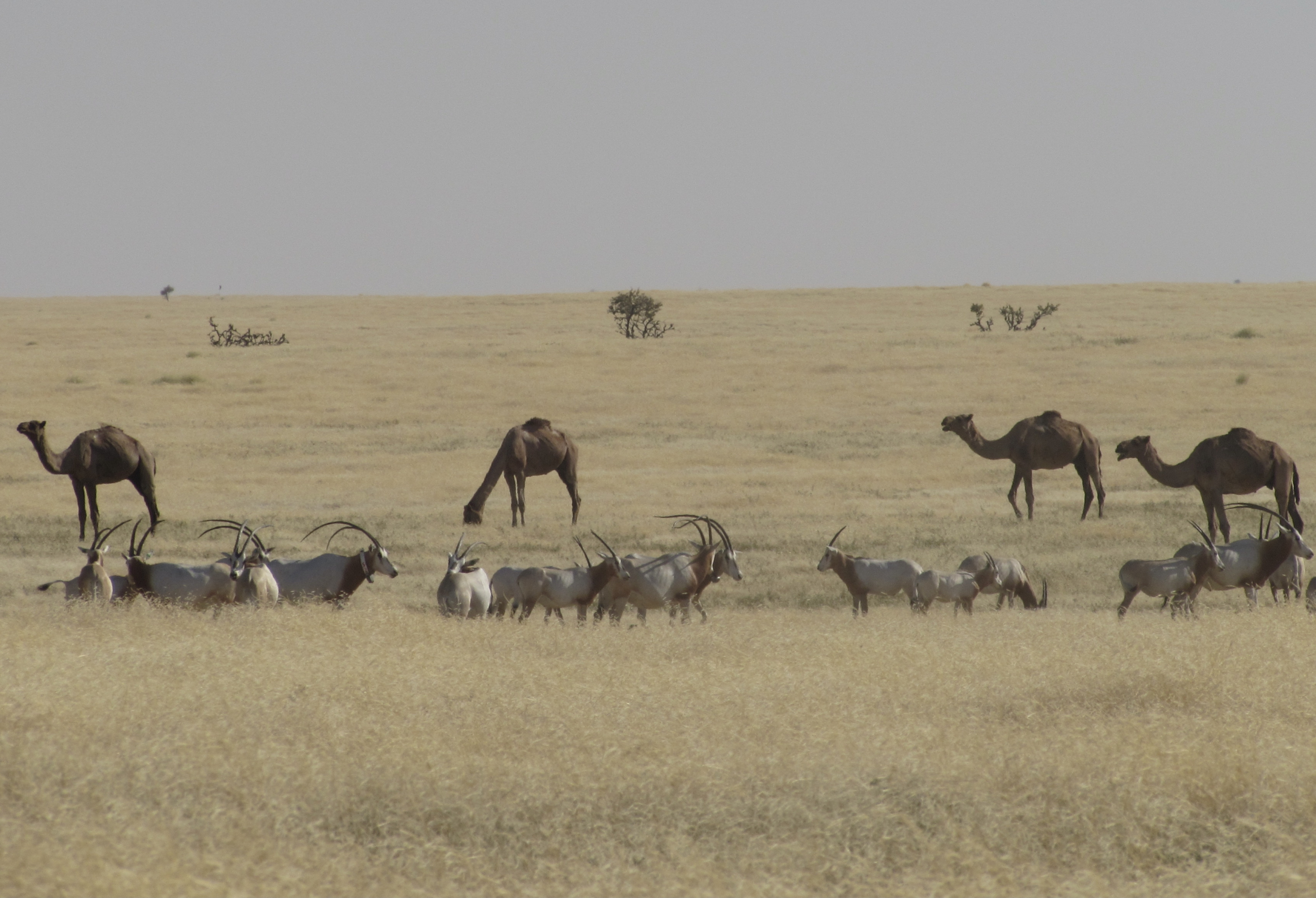Sandscript #30 – One Health Approaches in antelope reintroduction programs
The Ouadi Rimé-Ouadi Achim Game Reserve in Chad is the only place in the world where three species of highly endangered antelope – dama gazelle, scimitar-horned oryx, and addax – can all be found together. When the seasonal rains fall – about July to September of each year – pastoralist families and their livestock also enter the reserve. For six months or more, each year, hundreds of thousands of goats, sheep, cows, and camels, three endangered antelope (and other reserve wildlife), and human families must all share space and resources.

Read here the last article of Sandscript 30th issue
Traveling around the reserve during the rainy season is very difficult. Vehicles get bogged down in mud and sand, and the usual tracks are often flooded, sometimes dramatically. However, if you do manage to navigate the reserve, you’ll often find groups of wildlife and livestock grazing near each other, or taking turns in the same shady spot. These scenes are a picturesque reminder that wild and domestic animals have long shared the Sahelian grasslands. But such co-occurrence can enable the transmission of dangerous diseases. If you venture under one of these trees, you’ll soon find yourself covered in ticks in search of a blood meal.
By feasting on different creatures seeking a bit of shade, these ticks (along with insects) can spread diseases between species.
Because populations of dama, oryx and addax are so small, disease outbreaks could have catastrophic consequences. Pastoralists live extremely closely with their livestock, which creates opportunities for diseases to pass between animals and people.
Pastoralists also depend on their animals for food and income. Thus, diseases in livestock also impact human health and livelihoods.
We are using a One Health approach to investigate infectious diseases in both the antelope and livestock in the reserve. The One Health concept recognizes the interdependence of wildlife, livestock, humans, and the wider ecosystem in shared landscapes. One Health studies seek to identify how the different components are interconnected, in order to better understand and manage risks to health, and develop sustainable ecosystems that balance the needs of humans, domestic animals and wildlife. The need for One Health approaches was highlighted by a mass mortality of scimitar-horned oryx released into the reserve in 2018. Veterinary examinations and laboratory analyses showed that oryx that died had multiple diseases, including the deadly Rift Valley fever virus, which can also cause illness and death in livestock and humans. Since this event, we have been conducting health surveillance in free-roaming scimitar-horned oryx.
The veterinary team at the Environment Agency – Abu Dhabi are providing samples and test results from before animals were transported to Chad, to enable comparison of infection status before and after reintroduction. Later this year we will sample livestock grazing in the reserve during the wet season, when land-sharing between domestic animals and wildlife is greatest, and the ticks and insects that act as disease vectors are most abundant. We will compare the samples collected from antelope and livestock to improve our understanding of the infection risks between species and identify the best targets for disease control.
This study is being implemented as a One Health collaboration between partners including Sahara Conservation, the Smithsonian’s National Zoo and Conservation Biology Institute, the University of Edinburgh, the Institut de Recherche en Élevage pour le développement of Chad, the Centre de coopération Internationale en Recherche Agronomique pour le Développement and the IUCN Antelope Specialist Group. Each partner institution contributes their unique background – about human communities, animal diseases, zoonotic diseases, and wildlife movement and behavior – to learn how diseases spread among people, livestock, and wildlife in an integrated way.
We hope that bringing together knowledge across multiple disciplines will provide a powerful tool to improve health outcomes for people and animals in the shared environment of the reserve. Moreover, increasing our understanding of infection risks with livestock will benefit future antelope translocations and reintroductions in Chad and beyond.
Katherine Mertes
PhD
Smithsonian’s National Zoo & Conservation Biology Institute
Stephanie Brien
Doctoral Researcher in Conservation Science and Soulsby One Health Fellow
Royal (Dick) School of Veterinary Studies and Roslin Institute, University of Edinburgh


